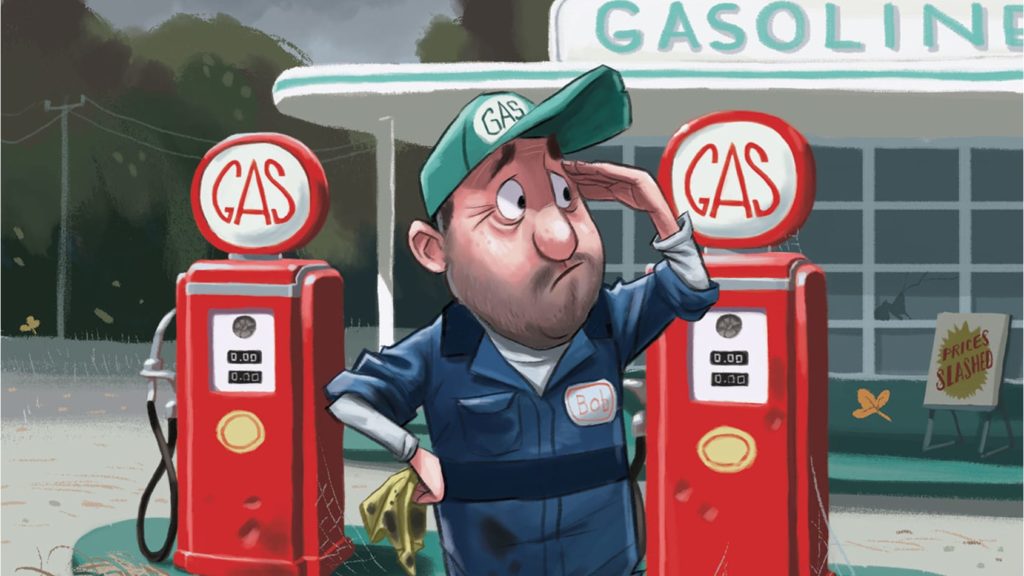Read The Full Article On: Moneyweek
Oil major BP says we may already have seen “peak oil demand”. What would that mean for your portfolio? John Stepek investigates.
The world may already have reached “peak oil demand” – the point at which annual consumption hits a plateau and is never any higher again. That’s not a hyperbolic press release from Extinction Rebellion or some other fringe environmental protest group. It’s according to none other than oil major BP. In its just-published Energy Outlook 2020 report, BP paints three scenarios for energy demand between now and 2050.
Under both its “Net Zero” scenario, in which governments and individuals take aggressive measures to reduce carbon emissions, and its slightly less aggressive “Rapid” scenario, oil consumption will never again hit the peak of 100 million barrels a day seen last year, before the coronavirus spread havoc across the globe.
BP is keen to point out that it’s not predicting the future – instead it’s engaging in scenario planning (which sounds a bit like having your cake and eating it to us, but let’s not get picky). The idea is to give some idea of just how volatile and uncertain the outlook is for energy demand over the coming decades. Advertisement
That said, even on BP’s “Business as Usual” scenario, we’re looking at a peak in the early 2020s followed by a lengthy plateau in oil demand. And while we have to bear in mind that new chief executive Bernard Looney has staked his reputation on making BP “greener”, the sheer extent of the shift in tone is striking. The 2019 outlook had “peak demand” occurring a whole decade later than the present scenarios suggest.
The idea of a world without fossil fuels – or at least, one that is moving significantly away from them – will be music to the ears of ESG investors – those who focus on a company’s impact on the environment and society, as well as its corporate governance.
But while growing attention among investors and consumers to ESG issues is a factor in this future demand shift (and BP’s reaction to it), there’s something more important going on. Today, there’s an increasingly strong business case for the idea that the returns to be had from oil simply aren’t worth the effort anymore.
Beyond petroleum (and the rest)
BP is certainly starting to put its money where its mouth is in a way that it didn’t in the early 2000s, with the “Beyond Petroleum” branding exercise. Earlier this year, Looney announced plans to slash BP’s oil production by 40%, and lift renewable investments tenfold by 2030, with the goal of becoming a “net-zero emissions” company by 2050.
Now BP has bought a $1.1bn stake in two US offshore wind projects being developed by Norwegian state oil company Equinor. The offshore wind industry is growing by around 20% a year, notes the Financial Times. Looney says the deal will help BP to its goal of “rapidly scaling up our renewable energy capacity”. Advertisement
Yet, BP is late to the party. As Ed Cropley notes on Breakingviews, in 2000, when BP was first making noises about “going green”, its market value was 100 times that of Danish wind turbine maker Vestas Wind Systems, which had been public for just two years. Today, BP is worth just two-and-a-half times as much as the wind farm group. “If only BP had really gone beyond petroleum when the going was good,” as Cropley puts it.
The key is that solar and wind projects are now competitive with long-term crude oil projects in terms of return on capital employed, as the cost of solar and wind has fallen and the price of oil has dropped, say Cropley and George Hay on Breakingviews. Meanwhile, “the regulated nature of electricity provision means green projects only need to earn 3%-5% a year to generate an economic return”, according to Goldman Sachs analysts. Oil, being more volatile, requires a bigger return – closer to 10% reckon Bernstein analysts – to justify the investment.
In short, the fundamentals increasingly favour green projects. According to UK government figures, “by 2030, the costs of solar power should be lower than gas, while offshore wind should be roughly comparable”. As a result, “Looney’s pivot may increasingly become a template”.
This shift has not gone unnoticed by markets. Traditionally, high oil prices have been good for renewables because a high oil price makes renewables more competitive and encourages more investment in the sector, whereas a crashing oil price should be bad news. Yet this year’s oil price crash has not pulled down the renewables sector. In fact, as analyst Eoin Treacy of FullerTreacyMoney.com observes, “the correlation between renewable stocks and oil prices broke down last year”. This implies that “the market has moved on from thinking of renewables solely in terms of cost competition with oil”.
Several factors lie behind that. One, the assumption that the cost of carbon credits – licences to emit, effectively – will carry on rising, which seems a reasonable assumption given the political appetite. Low interest rates are helpful too in terms of encouraging investment.
But another argument is simply that technology just keeps getting better. “Tesla’s cars now have the best resale value of any vehicle. Five years ago, second-hand electric vehicles were worthless,” notes Treacy.
So, what are the implications?

